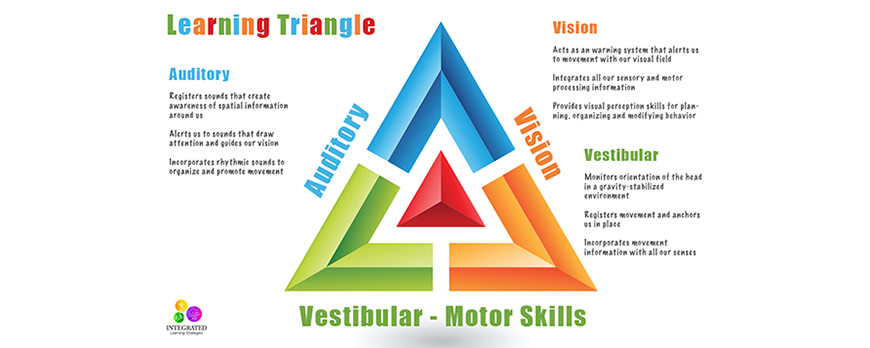Learning Triangle: Without the Vestibular, Visual and Auditory Working Together, Learning Fails

This article provides helpful information containing the learning triangle and how it promotes learning. Affiliates are included for your convenience.
So much of your child?s development involves their vestibular system and how the position of their body is in relation to gravity around us. Let?s pretend for a moment that you are training to be an astronaut. Without the proper training to help your body adapt to free falling and being weightless, your body won?t be able to function and you may become disoriented. The same happens to your baby when they are in the womb. They don?t depend yet on their vestibular system for gravitational security until they begin crawling, walking, reaching and grabbing.
Without these important developmental milestones, your child?s vestibular system becomes weak and can cause a disconnection in the brain for future learning. Studies have shown children who develop their motor skills and activate their vestibular systems with movement-based activities, were further advanced in cognitive development over other peers.
If your child?s vestibular system becomes underdeveloped, you may start to notice attention issues, learning challenges, emotional grounding problems and language disorders.
What?s more important, is the vestibular system (motor movement) can?t function on it?s own. It must team up with your child?s visual and auditory systems, creating a triangle for learning, to help them understand the relationship between sights, sounds, objects and people. Because the vestibular system is our internal GPS system, it ties all our senses together (sight, smell, touch, hearing). Each component of our triangle contributes to all aspects of our child?s learning development in the classroom.
Πηγή: islearningcorner.com
